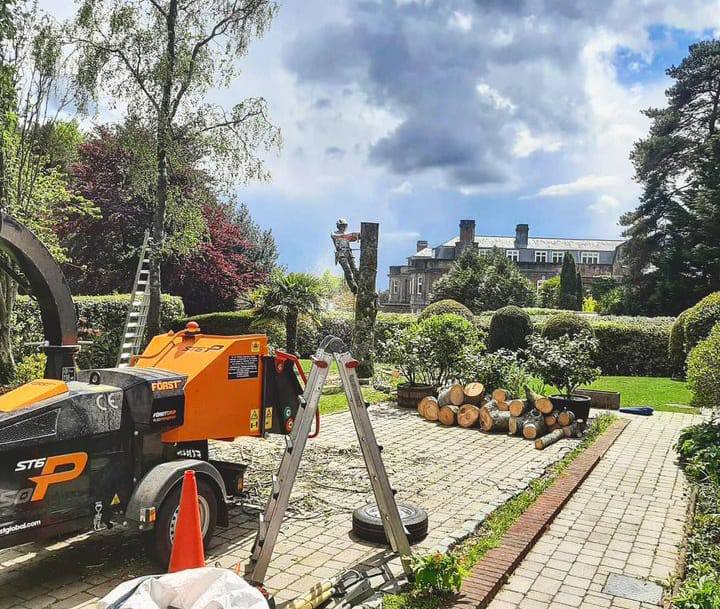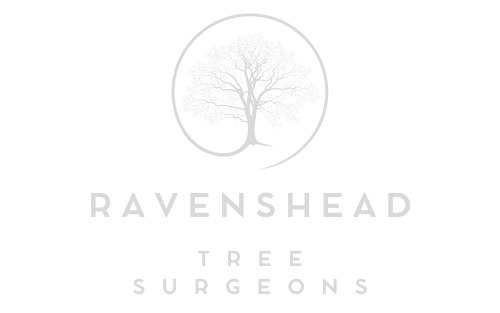Why Dense Hedges Need Skilled Thinning
Hedges are an essential feature in many gardens across Ravenshead, providing privacy, structure, and a touch of greenery that enhances any property’s appearance. However, when left to grow unchecked, hedges can quickly become dense, tangled, and unhealthy. Overly thick hedges might look impressive at first glance, but beneath the surface, they can harbour problems that affect both their appearance and long-term health.
At Ravenshead Tree Surgeons, we understand that hedge maintenance is more than just trimming the surface. Skilled thinning is an important process that promotes light penetration, encourages healthy regrowth, and prevents issues such as dieback or pest infestation. Knowing when and how to thin a hedge properly can make all the difference between a thriving boundary and one that struggles to maintain its shape.
What Is Hedge Thinning?
Hedge thinning is a specialist pruning technique that involves selectively removing branches from within the hedge rather than simply cutting the outer surface. Unlike a standard trim that focuses on shaping, thinning addresses the density of growth inside the hedge, ensuring that air and light can move freely throughout.
This process allows inner shoots to develop, prevents overcrowding, and supports healthier, more balanced growth over time. It’s a precise job that requires an understanding of plant structure, timing, and species characteristics — something the team at Ravenshead Tree Surgeons carries out with expertise.
The Problems Caused by Overly Dense Hedges
While a thick hedge might seem ideal for privacy or wind protection, excessive density can cause hidden problems that impact its overall vitality.
Common issues with dense hedges include:
- Lack of airflow: Stagnant air encourages fungal diseases such as mildew and leaf spot.
- Shaded inner growth: Without sunlight, inner leaves die off, leaving hollow centres and weak stems.
- Pest infestations: Dense, shaded areas create a haven for insects and nesting pests.
- Reduced flowering or fruiting: Plants like hawthorn or privet produce fewer blooms when overcrowded.
- Unstable structure: Heavy outer growth can cause splitting or leaning, especially in tall hedges.
Over time, these problems not only affect the hedge’s appearance but also its strength and resilience against weather conditions.
The Benefits of Skilled Hedge Thinning
Properly thinned hedges are healthier, stronger, and more visually appealing. They also require less maintenance in the long run because their growth becomes more balanced and sustainable.
Key benefits include:
- Improved light penetration: Encourages interior growth and prevents bare, woody centres.
- Better airflow: Reduces humidity and the risk of fungal infection.
- Enhanced stability: By removing excess weight, the hedge withstands wind and weather more effectively.
- Longer lifespan: Promotes strong, even growth that extends the hedge’s life.
- Cleaner appearance: Maintains an attractive, natural shape without looking over-clipped or top-heavy.
At Ravenshead Tree Surgeons, we focus on thinning with precision to preserve the hedge’s structure while optimising its health and density.
How Professional Thinning Differs from Basic Trimming
Many homeowners mistake trimming for thinning, but the two techniques serve different purposes. Trimming simply shapes the hedge, giving it a tidy outer appearance, while thinning addresses its internal health and growth dynamics.
Professional hedge thinning involves:
- Assessment: Determining which branches are overcrowded, damaged, or non-productive.
- Selective removal: Cutting back specific shoots to open up the hedge’s core.
- Encouraging new growth: Promoting light access to dormant buds within the hedge.
- Balancing density: Ensuring the hedge remains uniform and robust throughout.
Without the right knowledge or tools, improper thinning can leave unsightly gaps or damage key structural branches. That’s why skilled handling is essential to maintain both appearance and strength.
When Should You Thin a Hedge?
Timing is vital in hedge maintenance. For most species, thinning is best carried out once or twice a year, depending on their growth rate and type.
- Evergreen hedges (such as yew, laurel, and leylandii) benefit from thinning in late spring or early summer.
- Deciduous hedges (like beech or hawthorn) are best thinned during their dormant season, typically in late winter before new growth begins.
If your hedge has become excessively thick or shows signs of poor airflow — such as interior browning or weak new shoots — professional thinning should be arranged as soon as possible to prevent long-term decline.
Why Skilled Thinning Protects Long-Term Hedge Health
Skilled thinning is not just about making a hedge look better — it’s a proactive way to ensure its sustainability. By selectively reducing bulk and allowing better internal circulation, the hedge can continue to grow evenly and stay resilient to disease.
A well-maintained hedge contributes to the health of your entire garden ecosystem, providing stable shelter for wildlife while remaining strong enough to withstand storms and seasonal changes.
The specialists at Ravenshead Tree Surgeons tailor each thinning job to the hedge’s species, age, and location. We remove just enough growth to enhance light and airflow without overexposing or stressing the plant.
Recognising When a Hedge Needs Thinning
Some signs are easy to spot once you know what to look for. If your hedge looks dense on the outside but hollow or patchy within, it’s likely time for professional thinning.
Look out for:
- Thick outer layers with little green growth inside.
- Reduced leaf density near the base.
- Branches crossing or rubbing together.
- Signs of mould or mildew.
- Uneven growth or leaning caused by heavy tops.
Addressing these symptoms early helps restore balance and prevents the need for more drastic intervention later.
The Expertise Behind Proper Hedge Management
Carrying out hedge thinning safely and effectively requires more than just garden shears. Professional tree surgeons use specialist tools and techniques to access interior branches without damaging the outer layer.
At Ravenshead Tree Surgeons, our team combines technical knowledge with care and attention to detail. We consider species growth habits, weather conditions, and the surrounding landscape to ensure each hedge is pruned in a way that supports long-term health and harmony.
Conclusion
Dense hedges may look healthy from the outside, but without skilled thinning, they can quickly become weak, diseased, and unstable. Regular professional maintenance ensures that light and air reach every part of the plant, encouraging vibrant growth and structural integrity.
For property owners in Ravenshead, Nottinghamshire, Ravenshead Tree Surgeons offers expert hedge thinning and tree care services designed to keep your landscape in peak condition. With our professional approach, your hedges will stay healthy, balanced, and beautiful all year round.
Call us on: 01623 397 895
Click here to find out more about Ravenshead Tree Surgeons
Click here to complete our contact form and see how we can help with your trees needs.

